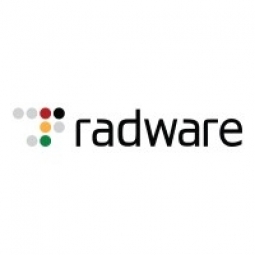Customer Company Size
Large Corporate
Region
- America
- Asia
- Europe
Country
- United States
- Worldwide
Product
- Radware’s Application Front-End solution
Tech Stack
- Web, Application and Database server farms
Implementation Scale
- Enterprise-wide Deployment
Impact Metrics
- Productivity Improvements
- Customer Satisfaction
- Employee Satisfaction
Technology Category
- Application Infrastructure & Middleware - API Integration & Management
Applicable Industries
- Retail
Applicable Functions
- Sales & Marketing
- Business Operation
Use Cases
- Retail Store Automation
Services
- System Integration
About The Customer
Founded in 1924, Ace Hardware Corp. is the largest global retailer-owned cooperative. With over 4,800 stores located in 50 states and 70 countries, Ace Hardware's global operations depend on the full availability, highest performance and complete security of networked applications across all store locations. Whether you’re looking for power tools, electrical and plumbing equipment or small appliances, Ace is always looking for ways to make their customers' shopping experience as quick and easy as possible.
The Challenge
Ace Hardware Corp., the largest global retailer-owned cooperative, needed to enhance both the customer shopping experience and employee responsiveness to customers through increased reliability of their CRM and ERP applications. With over 4,800 stores located in 50 states and 70 countries, Ace Hardware's global operations depend on the full availability, highest performance and complete security of networked applications across all store locations. The company needed a comprehensive availability, performance and security solution for their server farm infrastructure.
The Solution
Ace Hardware turned to Radware to deploy a comprehensive availability, performance and security solution for their server farm infrastructure. Ace chose Radware's Application Front-End solution to ensure the reliability of their globally distributed applications. Radware's purpose-built AFE application switches and application accelerator enables uninterrupted user access and fault tolerant transaction processing across all Ace Hardware Web, Application and Database server farms for local and global business continuity. Combining Health Monitoring, Load Balancing, and Traffic Redirection, Radware delivers 24/7 availability of all Ace online applications including their e-commerce web sites and internal Ace web-applications. Using Bandwidth Management, Ace prioritizes traffic across its global retail stores, ensuring service levels for mission-critical transactions including CRM and ERP applications.
Operational Impact
Quantitative Benefit

Case Study missing?
Start adding your own!
Register with your work email and create a new case study profile for your business.
Related Case Studies.

Case Study
Improving Production Line Efficiency with Ethernet Micro RTU Controller
Moxa was asked to provide a connectivity solution for one of the world's leading cosmetics companies. This multinational corporation, with retail presence in 130 countries, 23 global braches, and over 66,000 employees, sought to improve the efficiency of their production process by migrating from manual monitoring to an automatic productivity monitoring system. The production line was being monitored by ABB Real-TPI, a factory information system that offers data collection and analysis to improve plant efficiency. Due to software limitations, the customer needed an OPC server and a corresponding I/O solution to collect data from additional sensor devices for the Real-TPI system. The goal is to enable the factory information system to more thoroughly collect data from every corner of the production line. This will improve its ability to measure Overall Equipment Effectiveness (OEE) and translate into increased production efficiencies. System Requirements • Instant status updates while still consuming minimal bandwidth to relieve strain on limited factory networks • Interoperable with ABB Real-TPI • Small form factor appropriate for deployment where space is scarce • Remote software management and configuration to simplify operations

Case Study
Digital Retail Security Solutions
Sennco wanted to help its retail customers increase sales and profits by developing an innovative alarm system as opposed to conventional connected alarms that are permanently tethered to display products. These traditional security systems were cumbersome and intrusive to the customer shopping experience. Additionally, they provided no useful data or analytics.

Case Study
How Sirqul’s IoT Platform is Crafting Carrefour’s New In-Store Experiences
Carrefour Taiwan’s goal is to be completely digital by end of 2018. Out-dated manual methods for analysis and assumptions limited Carrefour’s ability to change the customer experience and were void of real-time decision-making capabilities. Rather than relying solely on sales data, assumptions, and disparate systems, Carrefour Taiwan’s CEO led an initiative to find a connected IoT solution that could give the team the ability to make real-time changes and more informed decisions. Prior to implementing, Carrefour struggled to address their conversion rates and did not have the proper insights into the customer decision-making process nor how to make an immediate impact without losing customer confidence.

Case Study
Ensures Cold Milk in Your Supermarket
As of 2014, AK-Centralen has over 1,500 Danish supermarkets equipped, and utilizes 16 operators, and is open 24 hours a day, 365 days a year. AK-Centralen needed the ability to monitor the cooling alarms from around the country, 24 hours a day, 365 days a year. Each and every time the door to a milk cooler or a freezer does not close properly, an alarm goes off on a computer screen in a control building in southwestern Odense. This type of alarm will go off approximately 140,000 times per year, equating to roughly 400 alarms in a 24-hour period. Should an alarm go off, then there is only a limited amount of time to act before dairy products or frozen pizza must be disposed of, and this type of waste can quickly start to cost a supermarket a great deal of money.

Case Study
Supermarket Energy Savings
The client had previously deployed a one-meter-per-store monitoring program. Given the manner in which energy consumption changes with external temperature, hour of the day, day of week and month of year, a single meter solution lacked the ability to detect the difference between a true problem and a changing store environment. Most importantly, a single meter solution could never identify root cause of energy consumption changes. This approach never reduced the number of truck-rolls or man-hours required to find and resolve issues.








